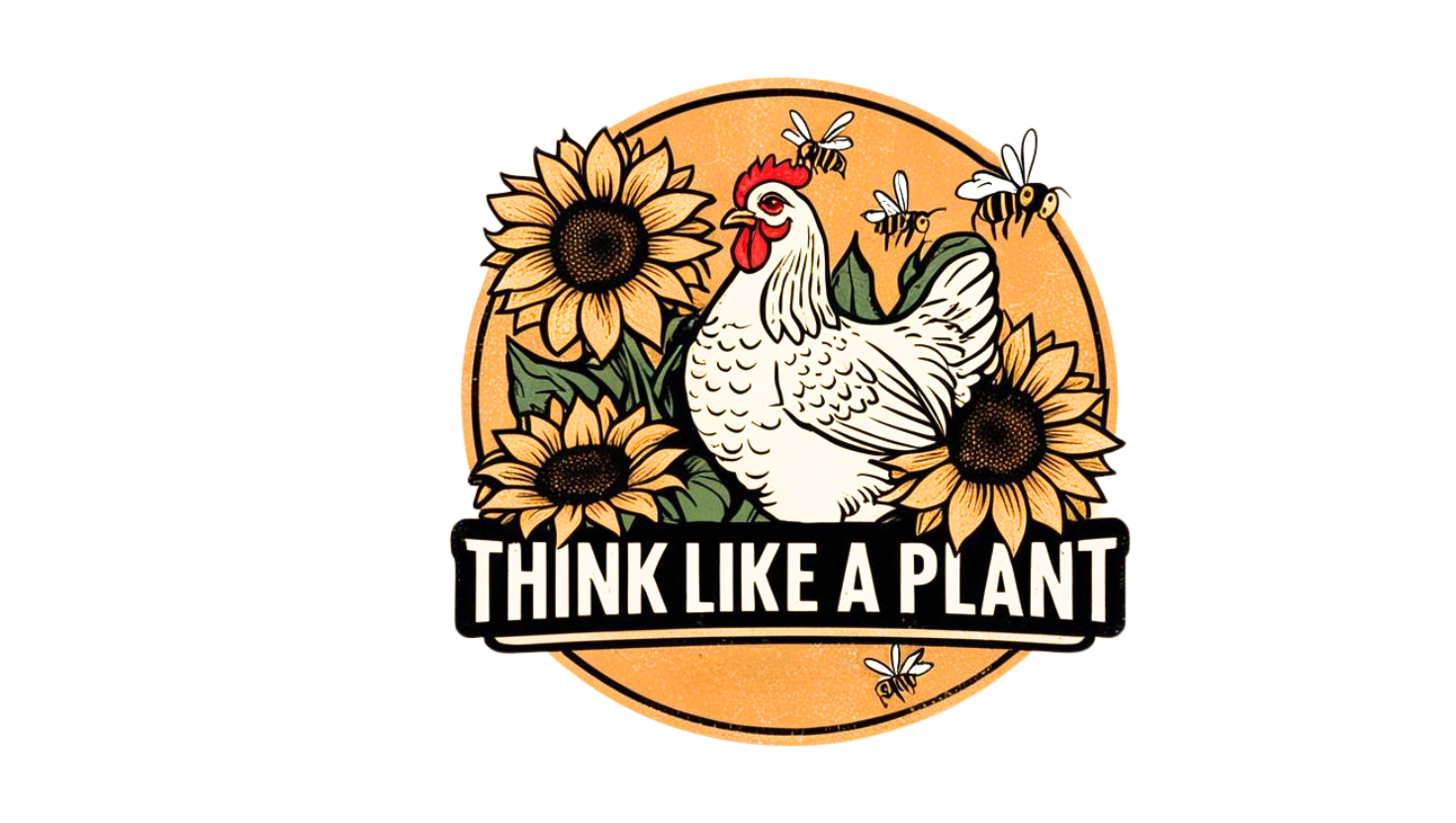Is Soil Blocking a Better Way to Seed Starting? What are the Benefits of this Trending Method?
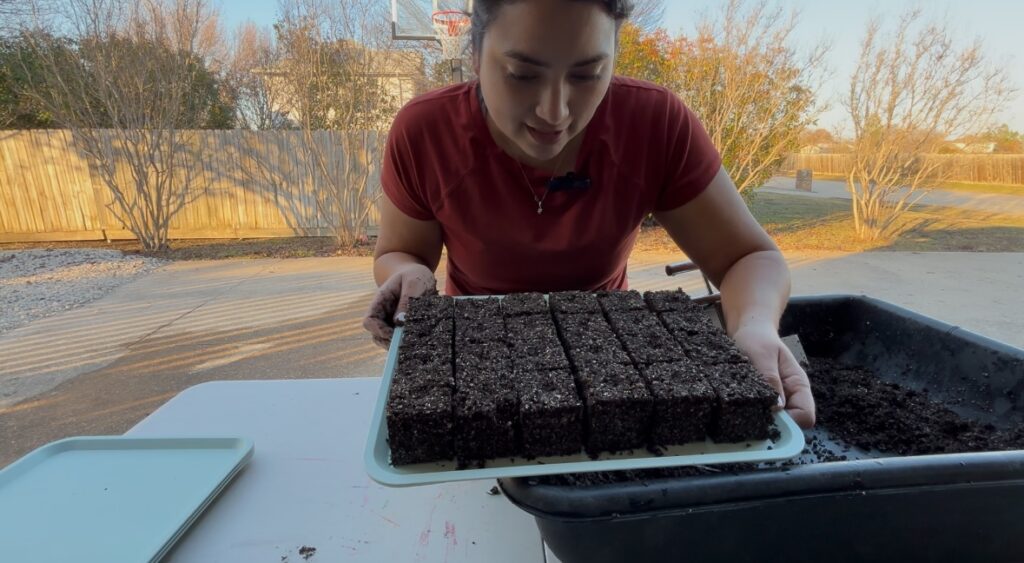
Purchasing items through the links provided in my blog is a way to help me earn a small commission at no extra cost to you. Thanks for your interest and support!
Introduction
Starting seeds is an exciting step for any gardener. It’s the moment gardeners look forward to because it marks the beginning of another growing season. One increasingly popular method for seed starting is soil blocking. This effiecient and eco-friendly technique has been trending especially among those who love to reduce their environmental impact.
Although traditional seed starting methods is not all bad, soil blocking offers numerous advantages, making it a growing favorite method among beginners and experienced gardeners. Lets explore what soil blocking is, the process, and the benefits it provides for germinating seeds.
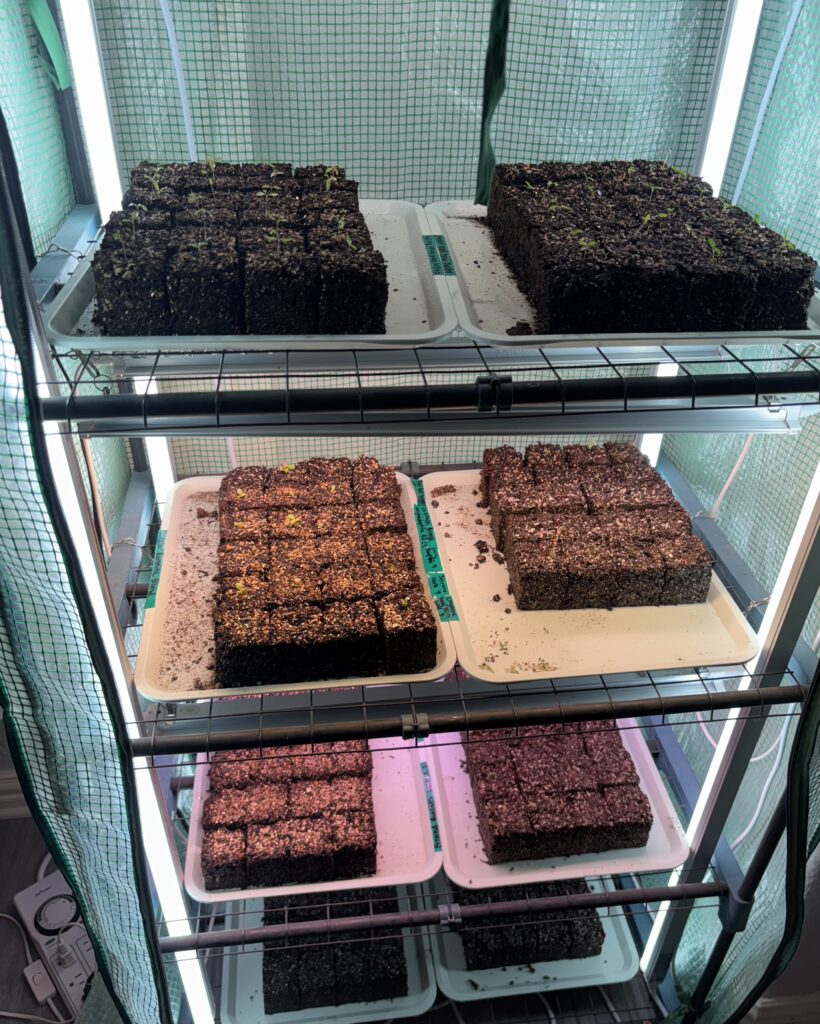
What is Soil Blocking?
Soil blocking is a method of starting seeds in small blocks of soil rather than in individual pots or trays. The process involves creating small, compact blocks of soil into which you sow your seeds. These blocks are typically made from a soil mix, compost, and other organic materials, which can be compressed into a block using a soil blocker tool. This method will help minimize transplant shock and promote healthy root growth.
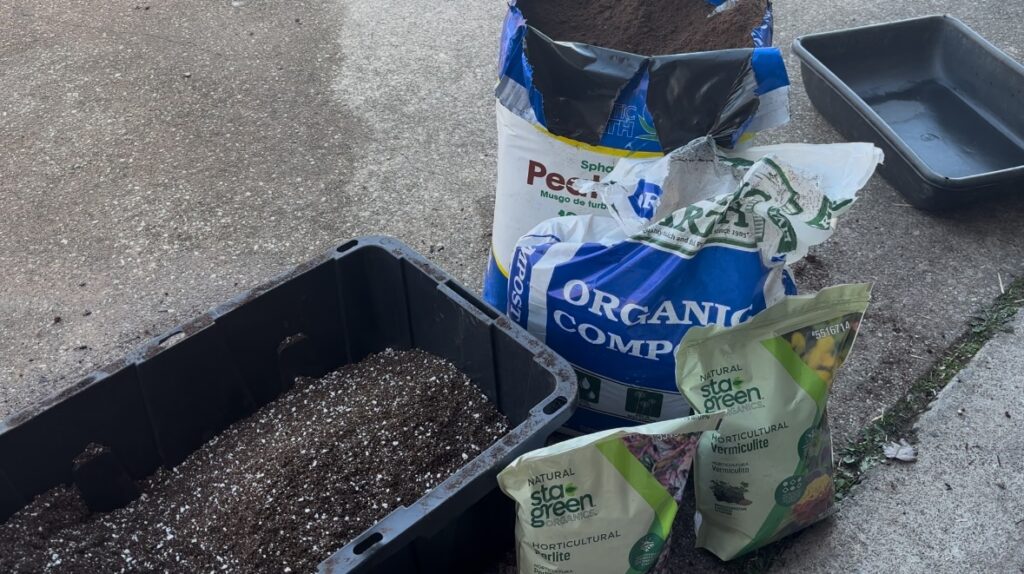
Materials Needed
Soil Blocker
A tool used to make the individual soil blocks. This tool is easily purchased online rather than at your local garden center. At least in my location, I have yet to run into one of these tools. There are different soil blockers to choose from depending on your needs. Options range from 4, 8, and up to 20 cells depending on the cell size. For starters, I recommend the 2 inch soil blocker. It is large enough to start any seed and as you experiment with soil blocking, you can always add different cell size blockers later on.
Containers
Containers used should be heavy duty for the soil weight and to avoid having to rebuy them in the future. Sure, clear containers will work if that’s what you have at hand but plan on buying some sturdy containers later on.
Trays
If starting your seeds indoors, I recommend using a tray that will not leak and has a lip for holding water. There are many tv trays that can be used to easily line up your soil blocks on. Make sure the tray you choose is flat and will fit in your greenhouse shelfs in a way that you are able to fit as many soil blocks as needed for your garden.
If starting seeds in your outdoor greenhouse, you can do like many other gardeners and make your own trays out of wood. Sure, the water will not hold but because it’s outdoors, there is no bottom watering necessary. Most will add a towel under the soil blocks to hold moisture and keep them moist longer, while others will use a fog or misting watering hose setting and top water their seedlings daily or as needed.
Soil Mix
Mixing your own soil will be cost effective but if you are in a rush or you just don’t need that much soil, then you can definitely buy ready made seed starting soil. It is highly important that any soil mix you make is sifted to avoid any large pieces getting into your soil blocks. Large pieces in your soil mix can prevent your seeds from germinating. You can watch my video on how I like to mix my soil for seed starting.
Soil Sifter
A soil sifter is handy if you are mixing your own soil. It helps to sift out any large pieces out of your mix. You can purchase something online or make your own using wood, 1/4 inch hardware, washers and screws.
Water
Good old H2O is needed to moisten your soil before blocking. No special water is needed, unless you prefer to harvest your own rain water, then of coarse, I would have to agree that rain water is the healthiest for all plants. Just make sure to add a little at a time so you don’t over saturate your soil.
How to Soil Block
1. Prepare Your Materials: Start by gathering all your materials and washing any containers with soapy water.
2. Prepare Your Soil Mix: Start with a well-draining soil mix. The recipe I like to use includes 2 parts sifted peat moss or coco coir, 2 parts sifted compost, 1 part perlite, and 1 part vermiculite. The goal is to create a mix that holds moisture while allowing excess water to drain away. Make sure you mix everything together somewhat evenly!
3. Moisten the Soil: Before forming your blocks, moisten your soil mix until it’s damp but not soggy. This will help the blocks hold together. Adding a little bit of water at a time will keep you from over watering. You can use waterproof gloves if you don’t want to get too dirty, but mixing with your hands helps you get the right feel of when your soil is ready.
4. Form the Blocks: Use a soil blocker tool to press the damp soil mix into the block shape. The tool creates a perfect cube that can be easily removed and placed in the growing area. Sometimes using your hands to fill is necessary, especially when your at the end of your soil batch. A flat tool like a knife can also be helpful in leveling the soil at the bottom before placing the blocks on the trays. Now, line up your blocks close together and leave a small space for bottom watering.
5. Plant Your Seeds: Depending on the depth of your seed, make a small indentation in the top center of each block and place 1-3 seeds in each. I like to use a knitters bamboo stick marked at different depths for this. If your seeds are large add 1-2 per block but if your seeds are small, add 2-3 per block. Cover them lightly with the same soil or vermiculite. Be careful not to over cover them if your seed packet says so. Some seeds require light to germinate, while others do not.
5. Water and Maintain: Place the soil blocks in a tray with a lip to avoid water spills. Make sure to check morning and evening to ensure that your seeds remain moist and receive adequate light and warmth to encourage germination. Sometimes soil blocks can dry out especially on the tops so carefully bottom water and top mist your soil blocks as needed.
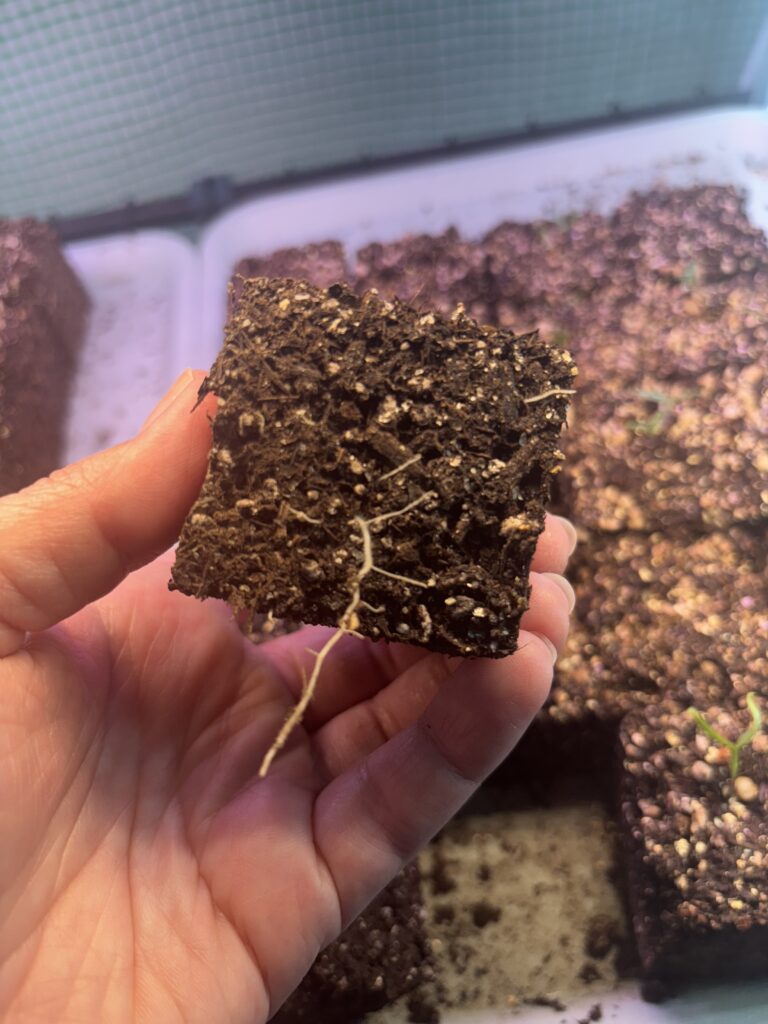
Benefits of Soil Blocking
1. Space Efficiency: Soil blocks take up less space than traditional pots. This allows gardeners to fit more seedlings in a smaller area, making it ideal for those with limited space.
2. Reduced Transplant Shock: Since seedlings grow in blocks without disturbing their roots, they often experience less transplant shock when moved to the garden or larger pots. This leads to healthier plants.
3. Root Health: Soil blocking encourages healthy root development. The blocks allow roots to grow naturally, preventing them from becoming root-bound, which can occur in traditional pots.
4. Less Plastic Waste: By using soil blocks instead of plastic pots, gardeners can reduce their environmental impact. Soil blocks are biodegradable and can be made from organic materials.
5. Cost-Effective: While you may need to invest in a soil blocker tool, the long-term savings on pots and trays can be significant. Many plastic seed starting containers break easily, forcing you to rebuy them. You can also create your own soil mix, further cutting down costs.
6. Easier Watering: Soil blocks absorb water evenly, reducing the risk of over or under-watering. This helps maintain consistent moisture levels for seedlings.
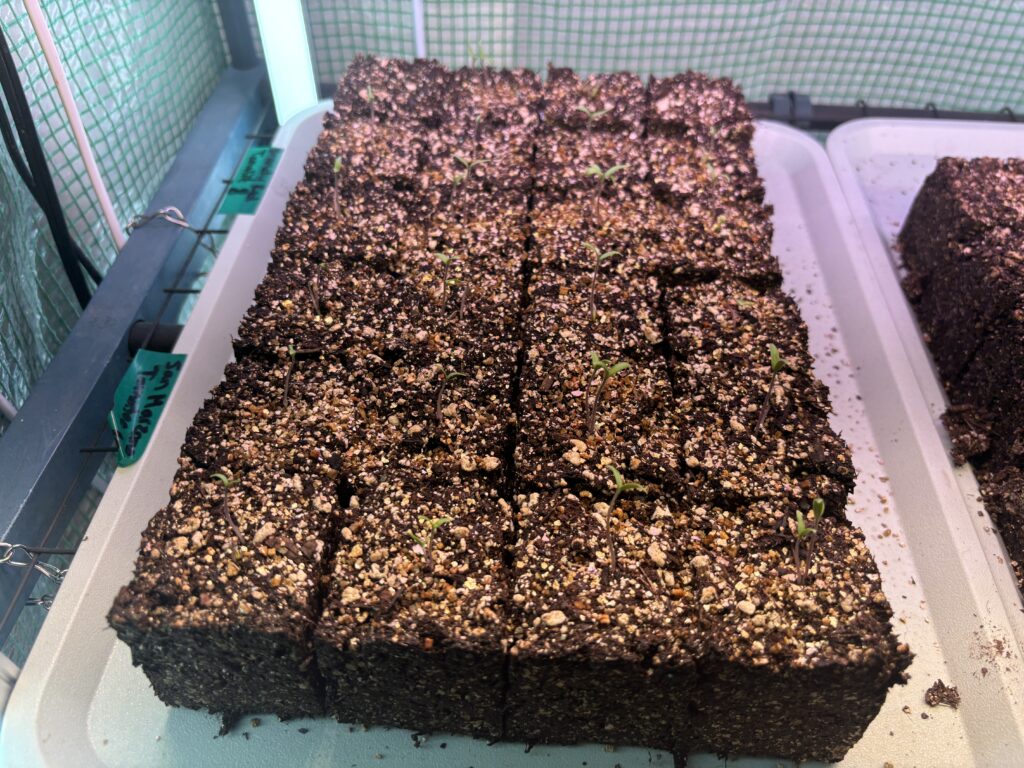
Tips for Better Soil Blocking
- Apply enough pressure so the blocks stick together
- Add compost or worm castings to help the blocks stick together
- If the blocks slump apart after compression, there might be too much water
- You are looking to have a brownie batter consistency
- You want to be able to squeeze just a little bit of water from your soil mix when its ready
Conclusion
Soil blocking is a fantastic technique for seed starting that offers numerous benefits, from space efficiency to enhanced root health. Whether you’re growing vegetables, flowers, or herbs, this method can help you produce strong, healthy seedlings ready for transplantation. If you’re looking for a sustainable and effective way to start your garden, consider giving soil blocking a try. You won’t be disappointed!
Recommendations
Links From This Post
Soil Blocker
- 2 Inch Soil Blocker (4 Cells) (Popular Choice)
- 1 Inch Soil Blocker (8 Cells)
- 3/4 Inch Soil Blocker (20 Cells)
Soil Mix Ingredients
Containers
Trays
- Mint Green Tray (15X11 Inches)
- Gray Tray (15X11 Inches)
Hoop House Materials
- Protection 10’x50′ 0.9oz Row Cover for Plants (cut to size if needed)
- 1/2 Inch PVC (10 feet) to bend into a hoop over garden bed
- 1/2 Inch Rebar cut at 2 feet to hold PVC in place
- Garden Clips to securely hold plant covers
